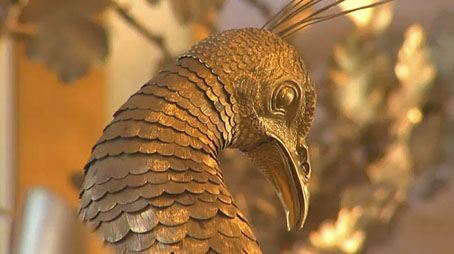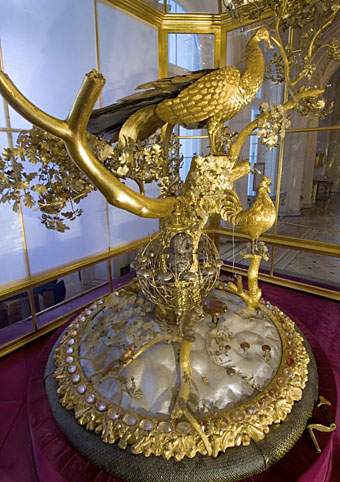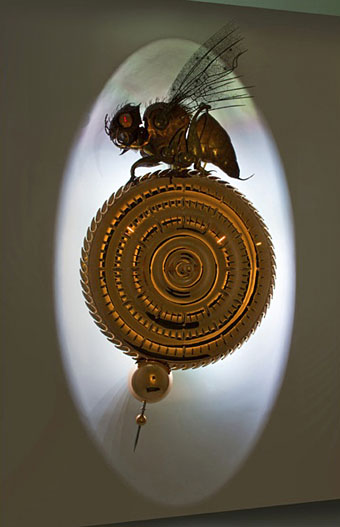Something discovered courtesy of the Google Art Project is James Cox’s splendid Peacock Clock automaton, an exhibit at the Hermitage Museum, St Petersburg:
The history of the Hermitage’s Peacock Clock begins in 1777, when the Duchess of Kingston visited St Petersburg. Balls were given in the Russian capital in honour of this wealthy and distinguished guest. Grigory Potiomkin, who met the Duchess in society, learned of James Cox’s magnificent mechanisms. Pandering to Catherine II’s passion for collecting, the Prince commissioned the celebrated craftsman to make a monumental automaton with a clock for the Empress’s Hermitage. In order to meet this expensive order as quickly as possible, Cox, whose financial affairs were currently not in the best of health, decided to use an existing mechanical peacock that featured in the Dublin lottery. He expanded the composition with a cockerel, owl and a clock mechanism with a dial incorporated into the head of a mushroom, and removed the snakes. To create his new automaton, Cox recruited the assistance of Friedrich Jury, a German craftsman who had settled in London. (More.)
The snakes referred to were from an earlier work which Cox used to create this one, and the Google view shows a snake-like base to the construction. Google shows us all the detail but to see the clock in action we need YouTube. Astonishing work even if the crowing rooster spoils things a little. Cox was the first owner of the equally remarkable (and arguably more beautiful) Bowes Swan automaton which was featured here some time ago.
Previously on { feuilleton }
• Ghost clocks
• Mystery clocks
• Skeleton clocks
• The Midsummer Chronophage
• Andrew Chase’s steel cheetah
• The Corpus Clock
• The Bowes Swan




